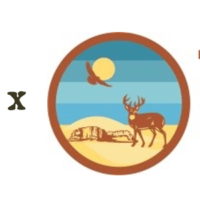Central Oregon – Exposure to cold can cause frostbite or hypothermia, and become life-threatening. Infants and the elderly are the most susceptible. When a winter storm approaches, stay inside, or seek shelter if caught outdoors.
Tips to follow to better protect you and others:
•When using an alternate heat from a fireplace, wood stove or space heater, be sure to use fire safeguards and properly ventilate. Close off unneeded rooms in the building. Stuff towels or rags in cracks and under doors.
•Cover windows at night to minimize loss of heat through the windows.
•Eat and drink sufficient amounts of water. Food provides the body with energy for producing its own heat. Fluids prevent dehydration.
•Wear layers of loose fitting, lightweight and warm clothing. Remove layers to avoid overheating and perspiration and subsequent chill.
•Make sure pets have plenty of food, water and proper shelter from the elements.
If caught outdoors:
•Find shelter immediately.
•Try to stay dry, and cover all exposed body parts.
•In no shelter is available, build a lean-to, windbreak, or a snow cave to protect yourself from the wind
•Build a fire for heat and to attract attention for rescue.
•Place rocks around the fire to absorb and reflect heat.
•Melt snow for drinking water.
•Avoid eating snow, as this will lower your body temperature.
If traveling:
•The best way to avoid becoming stranded or stuck during a winter storm is to avoid travel during the storm.
•Stay informed on the current weather, forecasts and warnings.
•Obtain the latest warnings and forecasts from your NOAA Weather Radio, The National Weather Service website http://weather.gov, or your favorite media news source.
•If you must travel, let someone else ( who is not traveling ) know of your travel plans.
•Weatherize your vehicle now, before rough winter weather arrives. Make sure your vehicle safety set includes: adequate tires, chains, tow rope, sand or cat litter for traction, shovel, tool kit, windshield scraper and brush, battery cables, first aid kit, flashlight and extra batteries, a blanket or sleeping bag, extra clothes, waterproof matches, high-calorie snacks and an empty can to melt snow for drinking water.
If caught outdoors:
•Find shelter immediately.
•Try to stay dry, and cover all exposed body parts.
•If no shelter is available, build a lean-to, windbreak, or a snow cave to protect yourself from the wind
•Build a fire for heat and to attract attention for rescue.
•Place rocks around the fire to absorb and reflect heat.
•Melt snow for drinking water.
•Avoid eating snow, as this will lower your body temperature.
If you become stranded while traveling:
•STAY WITH YOUR VEHICLE, and do not panic.
•If with other people, take turns sleeping.
•Run the motor every hour for about 10 minutes to maintain warmth, but keep window open a bit to prevent buildup of carbon monoxide.
•Make sure the exhaust pipe is not blocked by snow.
•Keep a brightly colored cloth tied to the antenna, in order for others to find your car.
•Exercise periodically by vigorously moving arms, legs, toes and fingers.
In the Mountains and higher Terrain:
Avalanches become a possibility during the winter, especially below steep slopes. Avalanches occasionally come down across roads, with little or no warning. Caution is advised when travelling along avalanche prone roads, especially after heavy snow has fallen or during periods of rapid snowmelt.
Roads which appear clear in the wintertime may actually be coated with a thin layer of ice, commonly called black ice. This nearly invisible ice layer can cause you to rapidly lose control of your vehicle. Black ice is most common during the nighttime hours into very early morning. If you detect black ice, reduce your speed!
Cold and its Effects on You:
Wind Chill: this is not the actual temperature, but rather how wind and cold combined feel on exposed skin. As the wind increases, heat is carried away from the body at an accelerated rate, thus lowering your body temperature. Animals are also affected by wind chill, but cars, plants and other objects are not.
Frostbite: this is damage to body tissue due to exposure to extreme cold. A wind chill of -20 degrees Fahrenheit will cause frostbite in just 30 minutes. Frostbite causes a loss of feeling and a white or pale appearance in extremities such as fingers, toes, ears and even the tip of your nose. If symptons are detected, get medical help immediately. If you must wait for help, slowly re-warm the affected areas. If the person is also showing signs of hypothermia, warm the body core before the extremities.
Hypothermia: this is a condition brought on when the body temperatures drops to less than 95 degrees Fahrenheit. It can kill. For those who survive, there are likely to be lasting kidney, liver and pancreas problems. Warning signs include uncontrollable shivering, memory loss, disorientation, incoherence, slurred speech, drowsiness and apparent exhaustion. Take the person’s temperature, and if it is below 95F, seek medical care immediately.















